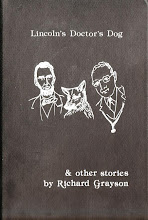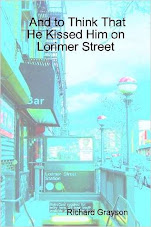Early this morning, we were at the grand opening of Mesa Grande Cultural Park, the culmination of decades of efforts to preserve one of the most important prehistoric Hohokam sites in Arizona. When we first came to Arizona in 1998, our brother lived just down the block, on West 10th Street east of Date Street, so we knew the area pretty well but had never before been able to explore this ancient archaeological treasure.
According to the
Arizona Historical Society,
The Hohokam, the ancestors of the Akimel O’odham (Pima), constructed the Mesa Grande temple mound. With walls made from “caliche,” the calcium carbonate hardpan that forms under our desert soils, the mound is longer and wider than a modern football field and is 27 feet high. Construction of the mound began by AD 1100 and continued to at least AD 1400. A large adobe wall encloses the mound and a large plaza in front of the mound. In one corner of the site, volunteers from the Arizona Museum of Natural History constructed a replica of a Hohokam ballcourt, an open-air structure where ballgames were played using a rubber ball made from a local plant.

One of two Hohokam “great mounds” in the Salt River Valley, the Mesa Grande mound was a dramatic symbol of the power of this ancient community. The village surrounding the mound once covered over one-half square mile and was home to perhaps two thousand Hohokam. Situated near the headgates of one of the two largest networks of irrigation canals created in the prehistoric New World, the site of Mesa Grande controlled over 27,000 acres of highly productive farmland.
The City of Mesa purchased the Mesa Grande ruins in the 1980s to preserve Mesa’s premier cultural treasure and to open it to the public as an educational and recreational facility.
This project has had the enthusiastic support of the community since 1927 when local citizens and the chamber of commerce held a parade down Main Street to promote its development. More recently, the Mesa Grande Neighborhood Alliance identified the development of Mesa Grande as a heritage tourism destination as their number one economic goal.
There was a free pancake breakfast after the ribbon-cutting ceremony, but we just were happy to walk around the site, learning a great deal about the Hohokam and their sophisticated society.
We're grateful to everyone involved in this, especially the Salt River Pima-Maricopa Indian Community, which provided a lot of the funding. The visit to Mesa Grande Cultural Park made us think of Tom Outland's story in Willa Cather's
The Professor's House, one of our favorite underrated novels, when Tom comes across the ruins of the New Mexican cliff dwellers:
I can't describe it. It was more like sculpture than anything else. I knew at once that I had come upon the city of some extinct civilization, hidden away in this inaccessible mesa for centuries, preserved in the dry air and almost perpetual sunlight like a fly in amber, guarded by the cliffs and the river and the desert.









































No comments:
Post a Comment